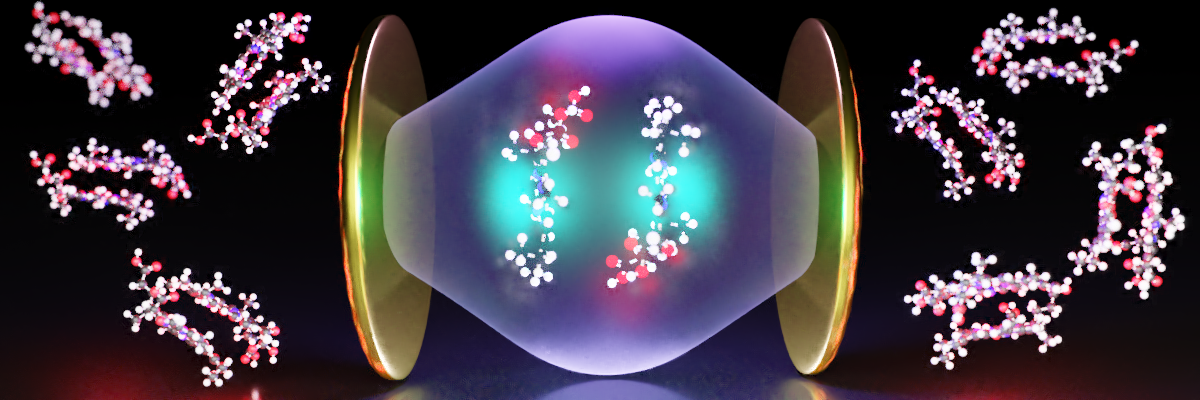A physical way to control chemical interactions

Schematic illustration of light matter strong coupling modified intermolecular interactions
Molecular optoelectronic devices often comprise films of organic molecules or chromophores. However, preparing the films of organic molecules for devices such as OLEDs is challenging. One of the limitations of using well-known organic chromophores as optoelectronic components is their self-assembly in films. When molecules self-assemble, they lose their inherent light-absorbing and emitting characteristics and adopt new features resulting from the assembly.
On a broader scale, intermolecular interactions in optoelectric devices are disadvantageous. Chemists often introduce chemical modification to the chromophores with bulky molecular units to reduce such intermolecular interactions. However, such chemical changes can also alter the desired optical character of the parent molecule.
In a new study, researchers from IISc led by Anoop Thomas and Akshay Singh introduce a simple physical methodology using the concept of light-matter strong coupling to suppress intermolecular interactions in films that do not require chemical modifications. The team placed the chromophores in a Fabry-Perot cavity formed between two highly reflecting mirrors and hybridised the molecular absorption with the cavity modes.
Interestingly, these hybrid states possess the characteristics of light as well as matter. In the present case, the formation of the hybrid-light matter states suppresses the intermolecular interactions of the chromophore and brings back the monomer-like optical characteristics. Thus, the study shows that quantum light-matter interactions can alter the ground-state intermolecular interactions that hold together the molecular assemblies. Mixing the characteristics of light and matter through strong coupling unravels new directions toward developing non-interacting molecular devices.
REFERENCE:
Biswas S, Mondal M, Chandrasekharan G, Mony KS, Singh A, Thomas A, Electronic strong coupling modifies the ground-state intermolecular interactions in self-assembled chlorin molecules, Nature Communications (2025).
https://www.nature.com/articles/s41467-025-60025-8
LAB WEBSITES:
https://ipc.iisc.ac.in/~at/
https://physics.iisc.ac.in/~aksy/




